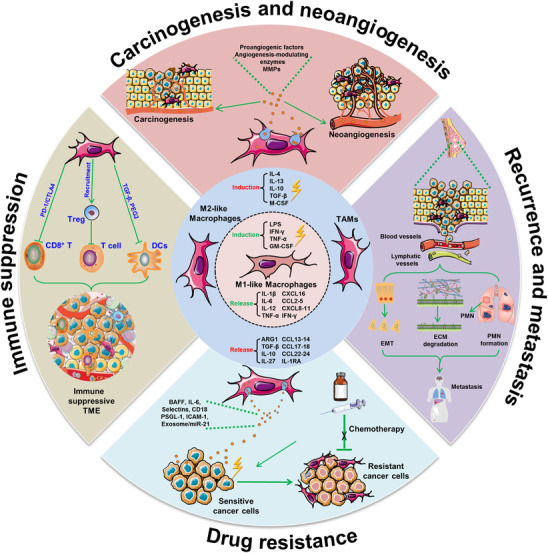FIGURE 1.

Pro‐oncogenic role of TAMs in cancer development. Macrophages could be differentiated into M1‐like and M2‐like phenotypes under different stimuli. M1‐like macrophages were usually considered as a “killer” phenotype while M2‐like macrophages were known as the “healing” phenotype. M2‐like macrophages have been reported to participate in the process of carcinogenesis and neoangiogenesis via releasing proangiogenic factors, enzymes, and MMPs. Meanwhile, M2‐like macrophages promoted cancer recurrence and metastasis via modulating epithelial–mesenchymal transition, extracellular matrix degradation, and facilitating premetastatic niche formation. On the other hand, M2‐like macrophages could induce chemoresistance by exosomal signaling or cell–cell contact. Most importantly, M2‐like macrophages contributed to establishing the immune suppression microenvironment by elevating the PD‐1/CTLA4 signaling or inhibiting the bio‐functions of cytotoxic T cells or dendritic cells
